In Paris, the School of Jewelry Arts of Van Cleef & Arpels is showcasing an exhibition about pearls and their importance to the development of the city as a jewelry epicenter. Called Paris, City of the Pearl, it retraces the history of pearls from the 19th to the 20th century, and its journey from the Arabian-Persian Gulf to Place Vendôme and Rue de la Paix, where they became the muse and inspiration for the biggest jewelers.
With their cultural, historical, and symbolic significance, pearls have become, throughout the years, the ultimate statement of elegance and refinement among women. A timeless element, they are a staple in women’s wardrobes and a versatile accessory. This exhibition succeeds in highlighting the pearl as a status symbol among the upper class while also centering on its key role in the development of the jewelry industry in the country.
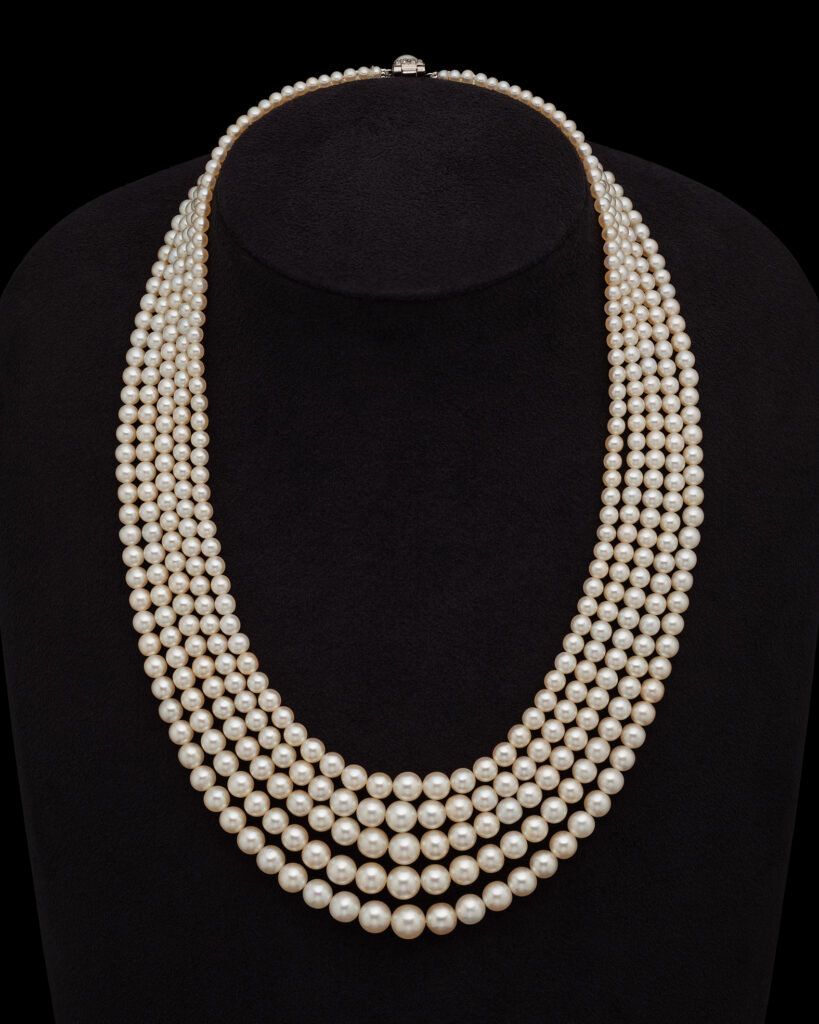
Sight, hearing, and touch are stimulated throughout the different rooms of the exhibition, with a scenography that aims to awaken the senses of the viewers. In the first room, visitors can immerse themselves in the feeling of pearls by running their hands through a shimmering mound of them placed at the center of the space, creating a sensory experience. The other rooms focus on hearing, with videos, and sight, with the marvelous and one-of-a-kind creations on display.
Curated by Olivier Segura, gemologist and director of the Asia-Pacific School of Jewelry Arts, and Léonard Pouy, doctor of art history, the exhibition starts with an explanation of the pearl as a biomineral and its different properties, varieties, gemological sources, and the mollusks that produce it. It then goes on to showcase its commercial importance for France and aesthetic appeal, as well as its uses throughout history. As the main provider of pearls for the country, the Arabian-Persian Gulf has held an important economic place in the development of jewelry hubs in Paris. Worldwide renowned locations like Place Vendôme and Rue de la Paix are where major jewelers established their houses, which remain active to this day.
Around one hundred pieces are at the center of the exhibition. From paintings, photography, posters, sketches, and illustrations to exclusive rings, brooches, necklaces, earrings, and bracelets from René Lalique, Van Cleef & Arpels, Frédéric Boucheron, FRED, Cartier, and private collections dating back to the 1860s, each piece is proof of the ongoing appeal of the pearl as an accessory and social marker.
The different images showcased in the exhibit are witnesses to the seductive and feminine symbology assigned to pearls since their beginnings. Throughout the exhibit and the illustrations displayed, the viewer can understand the intimate relationship between womanhood and pearls, and their ethereal connection to feminine power.
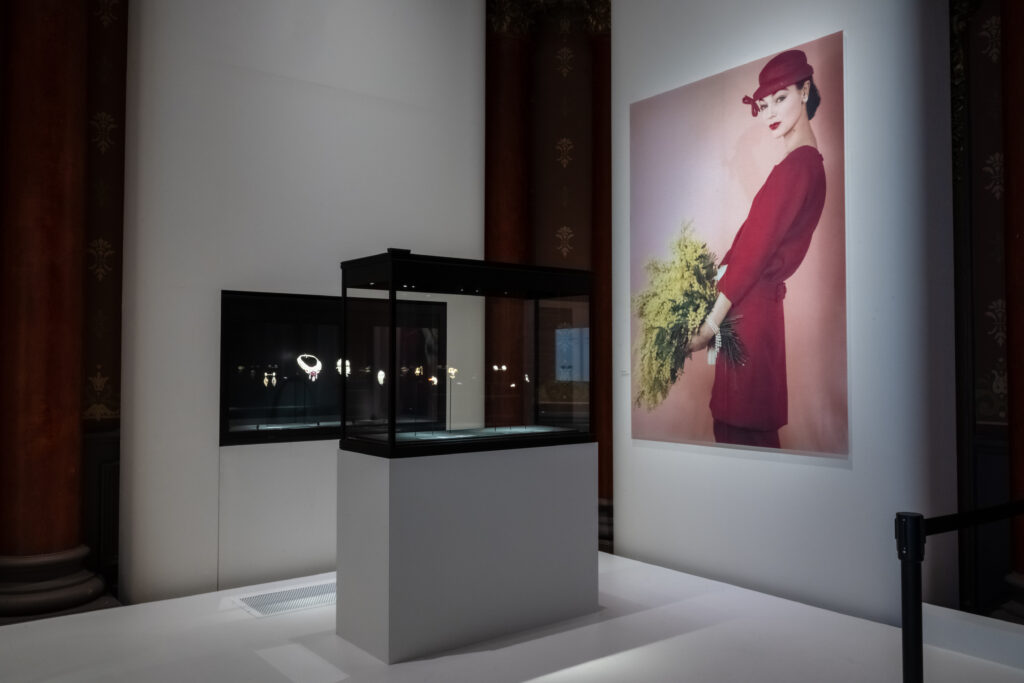
Beyond its commercial and decorative interest, the exhibition flawlessly portrays the artistic appeal of pearls in the spheres of fashion, opera, films, and photography, demonstrating why they became a signature of the roaring twenties and an enduring symbol of beauty and delicacy.
Paris, City of the Pearl, is organized by L’École des Arts Joailliers until June 1, 2025, Additional information is provided HERE
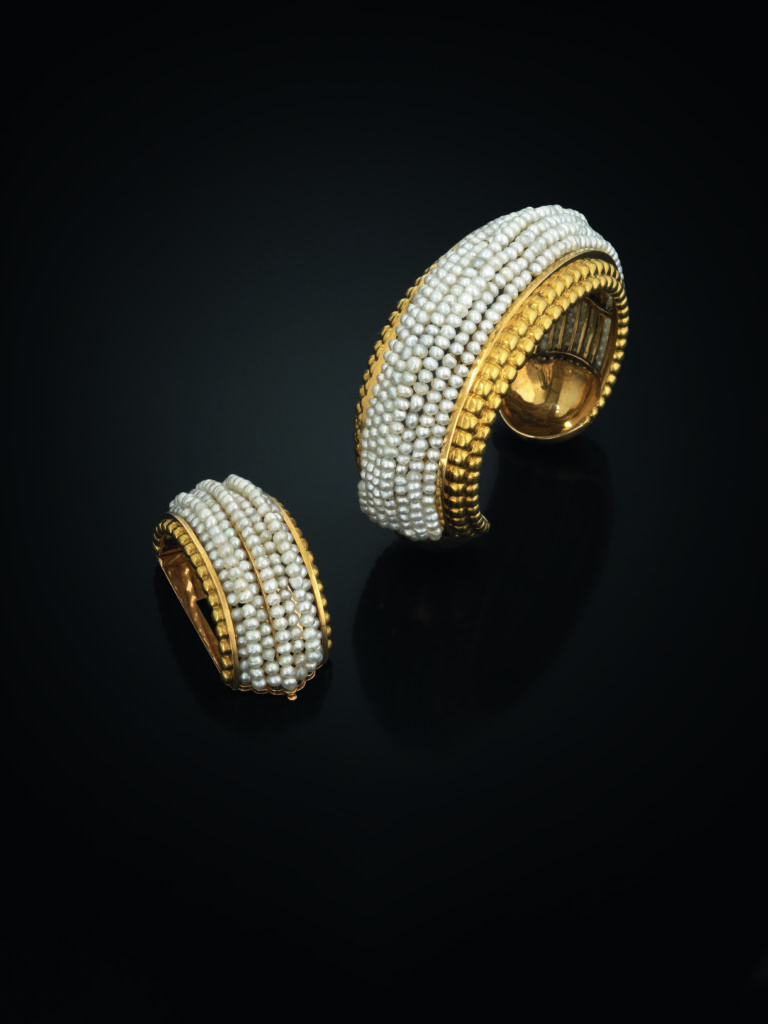
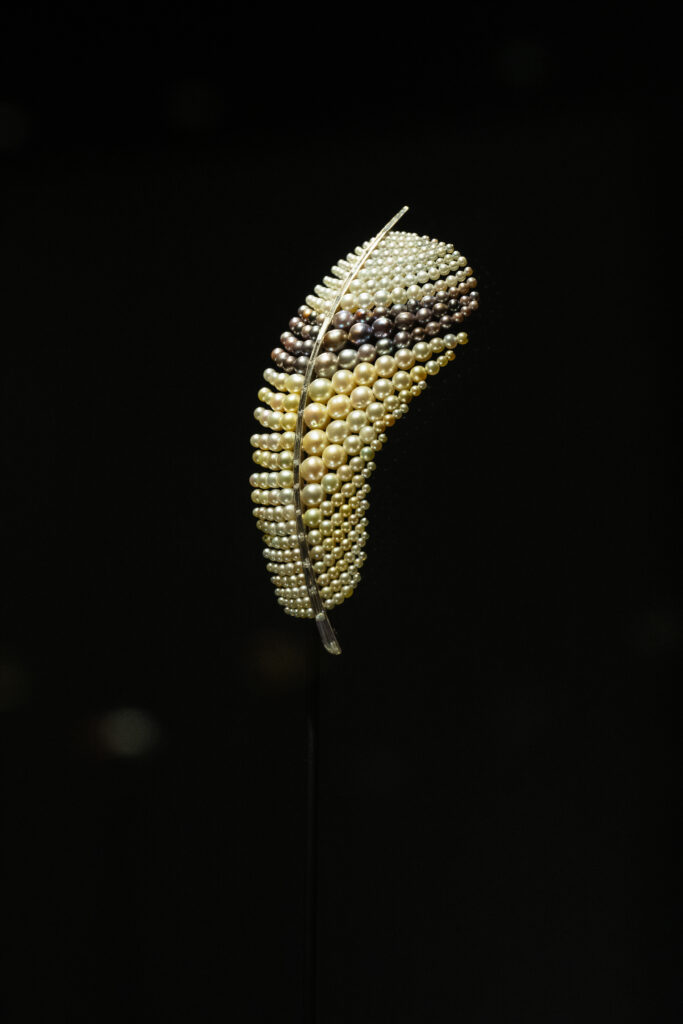
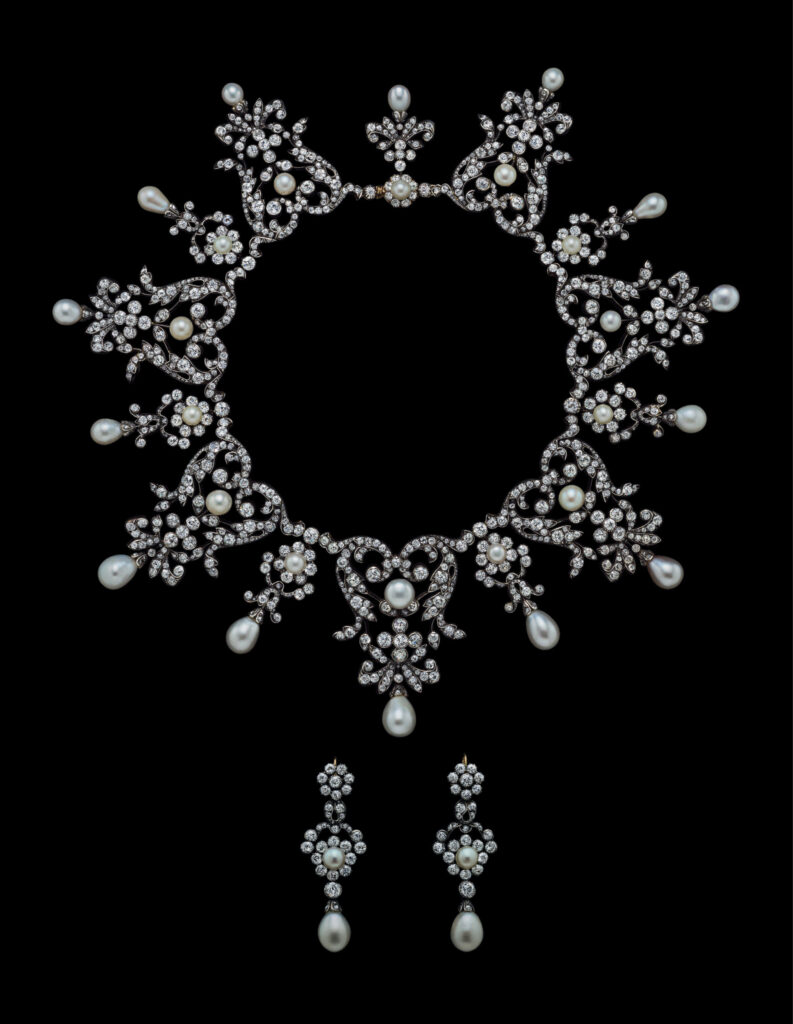
Credit photos:
1: “Belle Epoque” five strand natural pearl necklace, circa 1910, natural pearls, platinum. Private Collection, courtesy of the Albion Art Institute. © Albion Art Jewellery Institute
2: Exhibition Paris, City of Pearls – Photo Dylan Dubois
3: René Boivin, half set, bracelet and clip, inspired by the “Barbare” series, 1935–1937, granulated gold, natural pearls. La Galerie parisienne.
Necklace, 1900, natural pearl, diamonds, platinum. Collection Templier. © Collection Éric Landau
4. Theodoros, brooch, 2023. Private collection. Exhibition Paris, City of Pearls – Photo Dylan Dubois
5. Frédéric Boucheron, necklace and earrings of Edith Amelia Glyn, Lady Wolverton, 1896–1902, natural pearls, diamonds, gold, silver. Private Collection, courtesy of Albion Art Institute. © Albion Art Jewellery Institute.